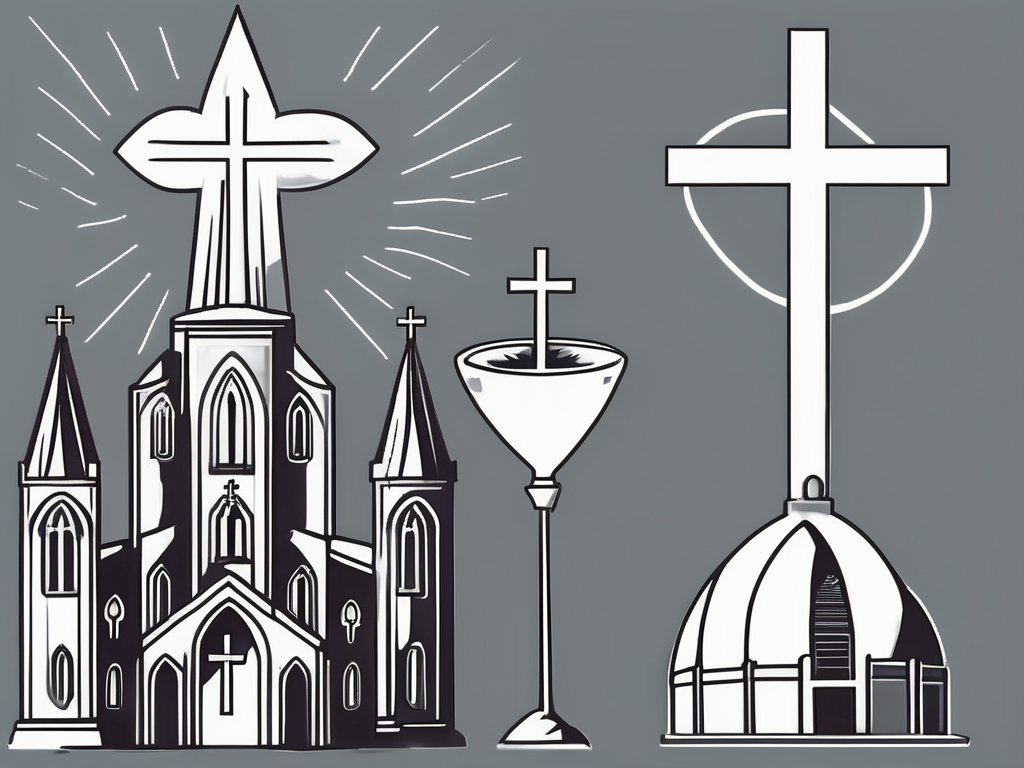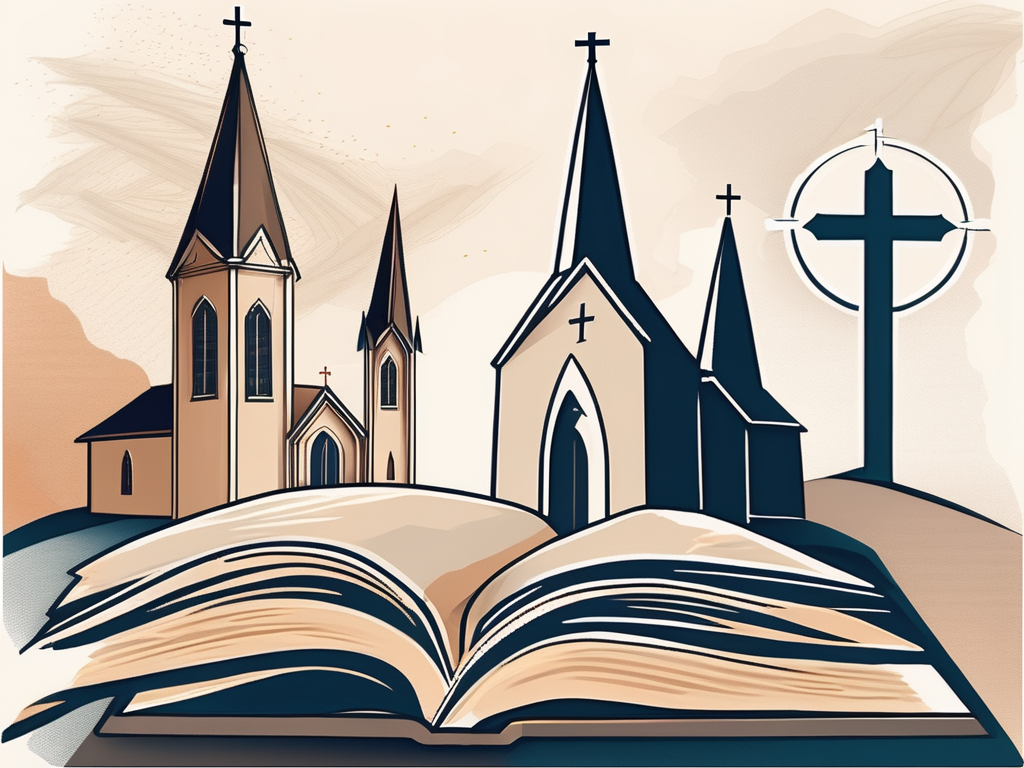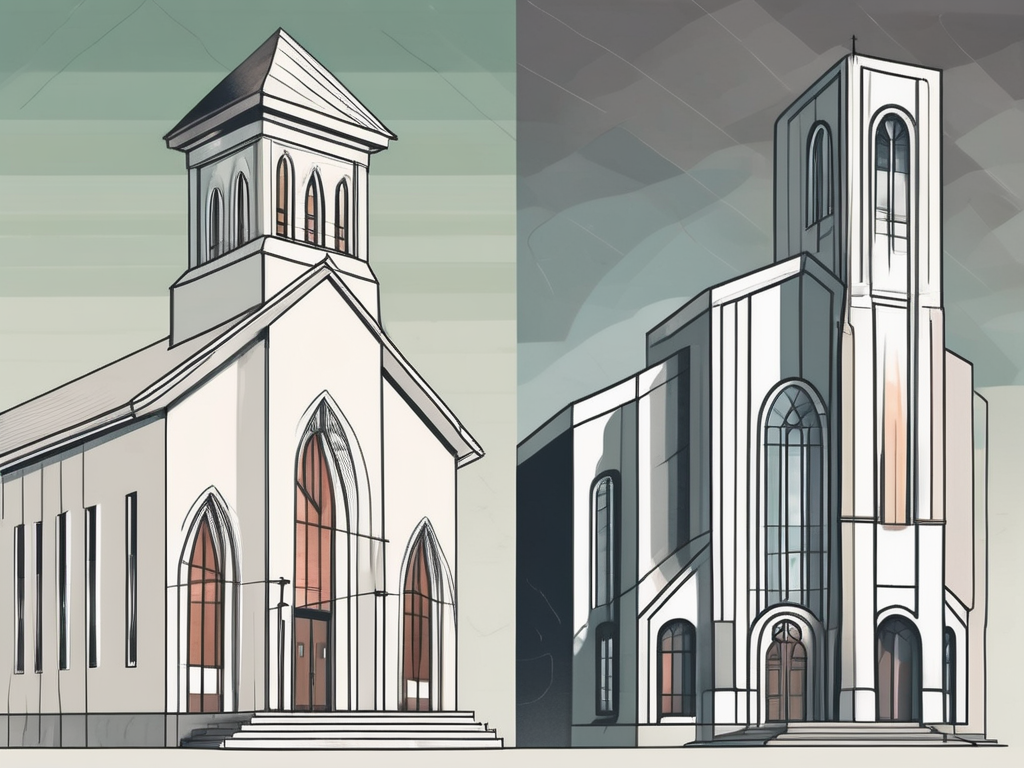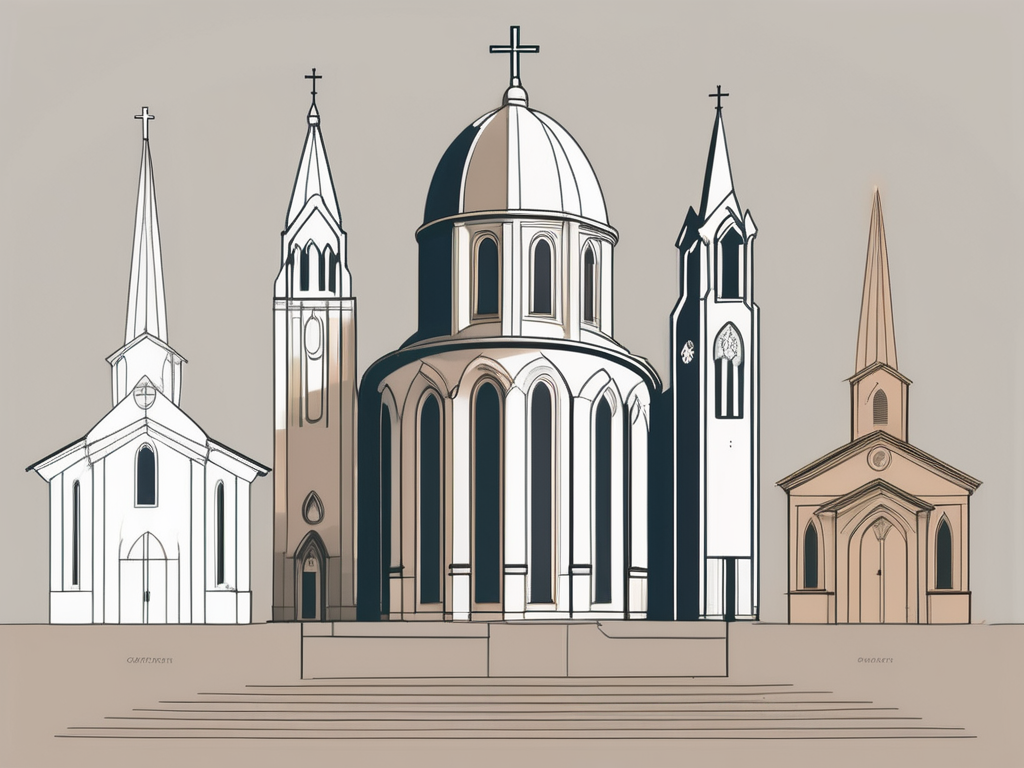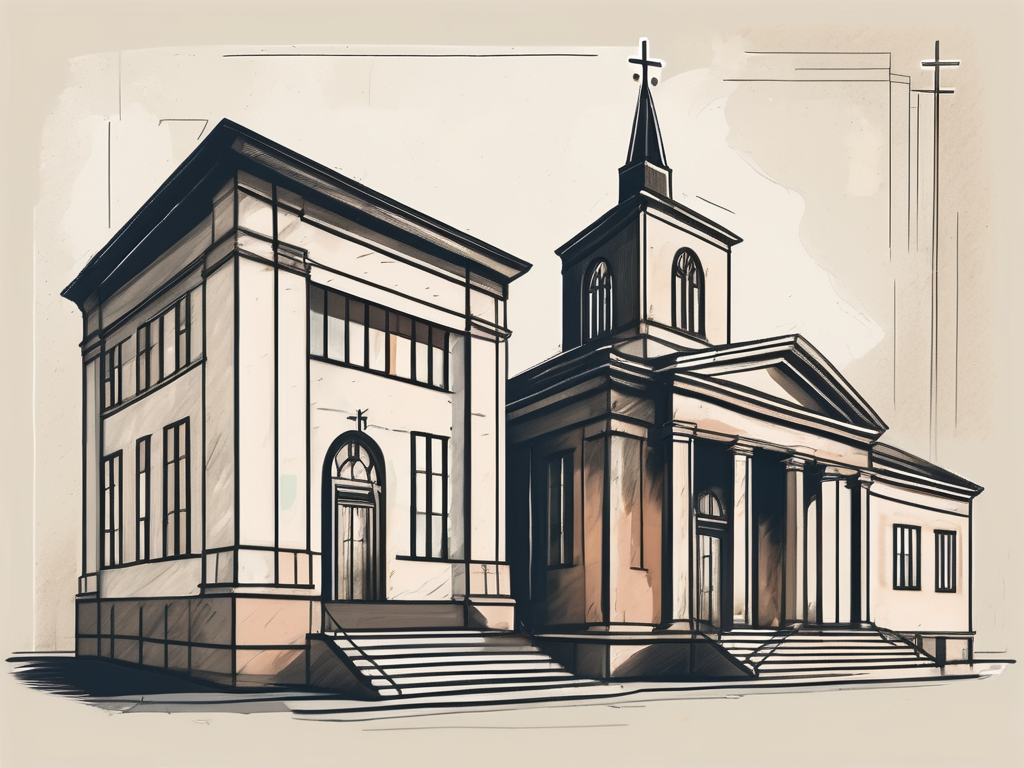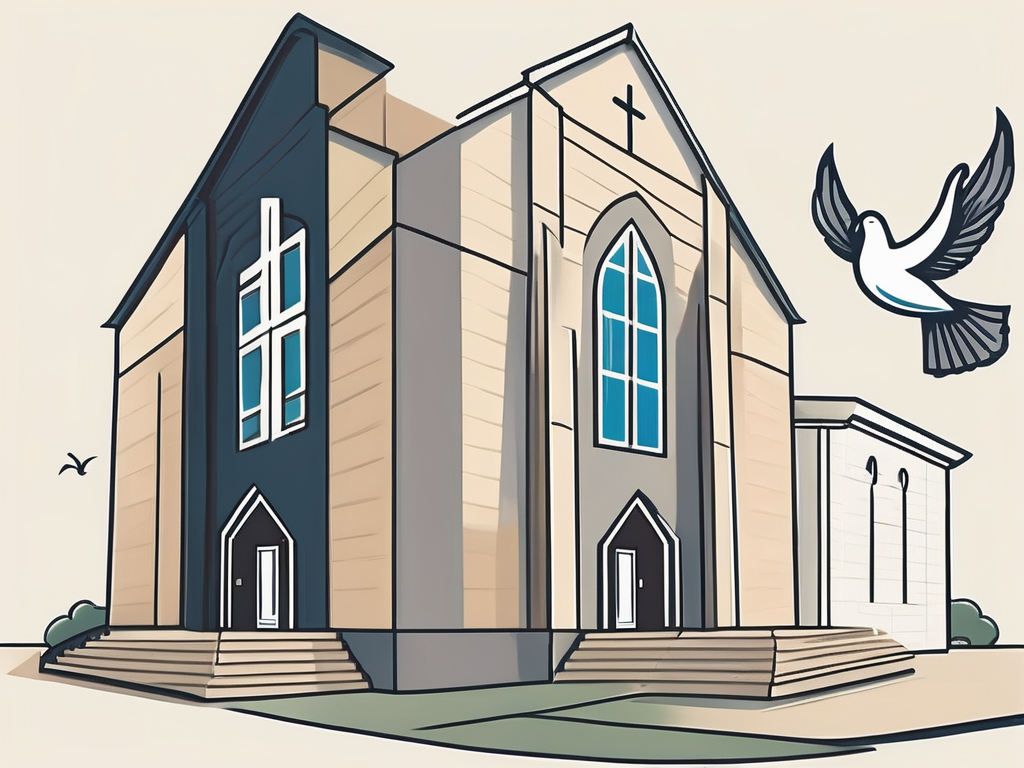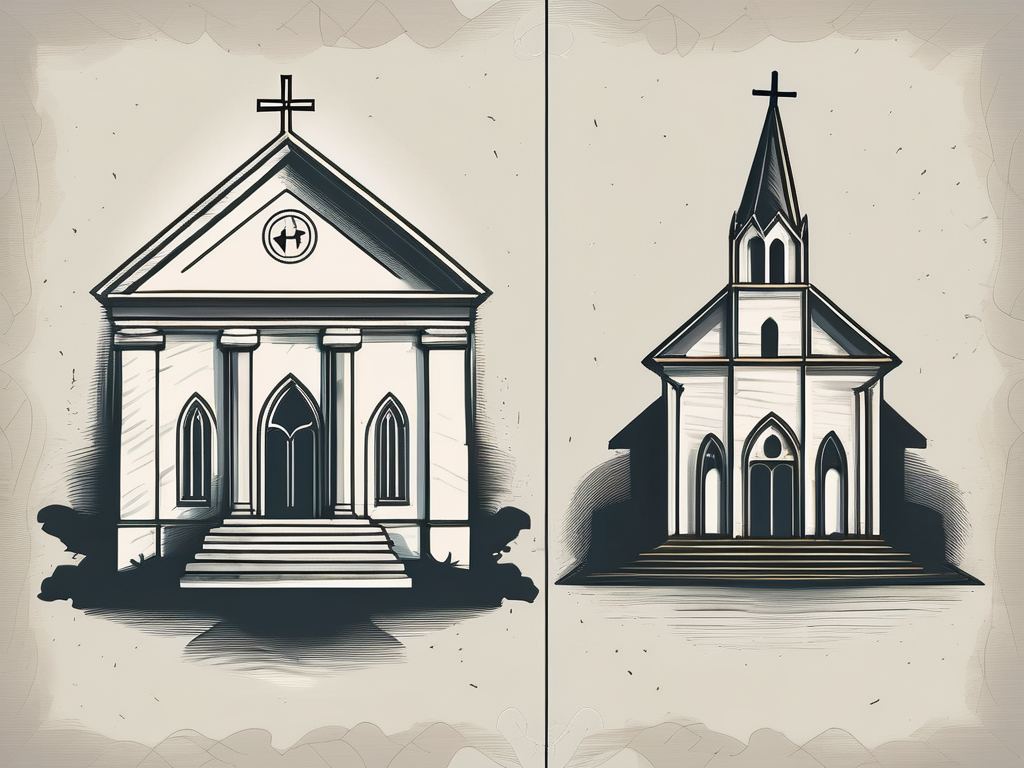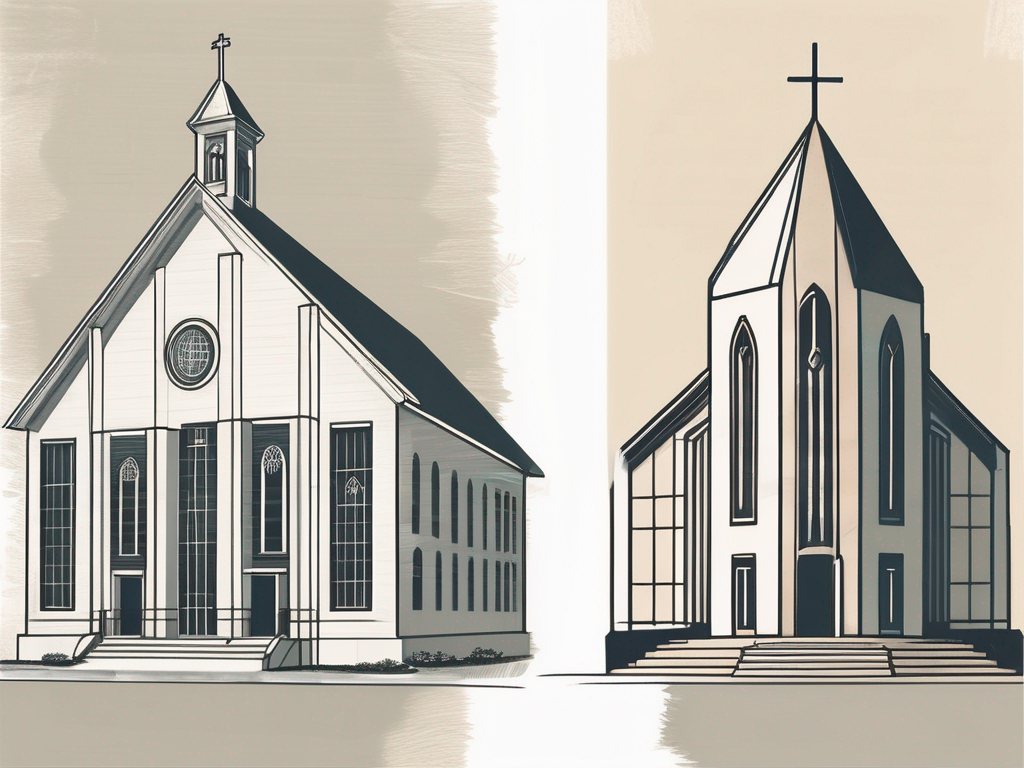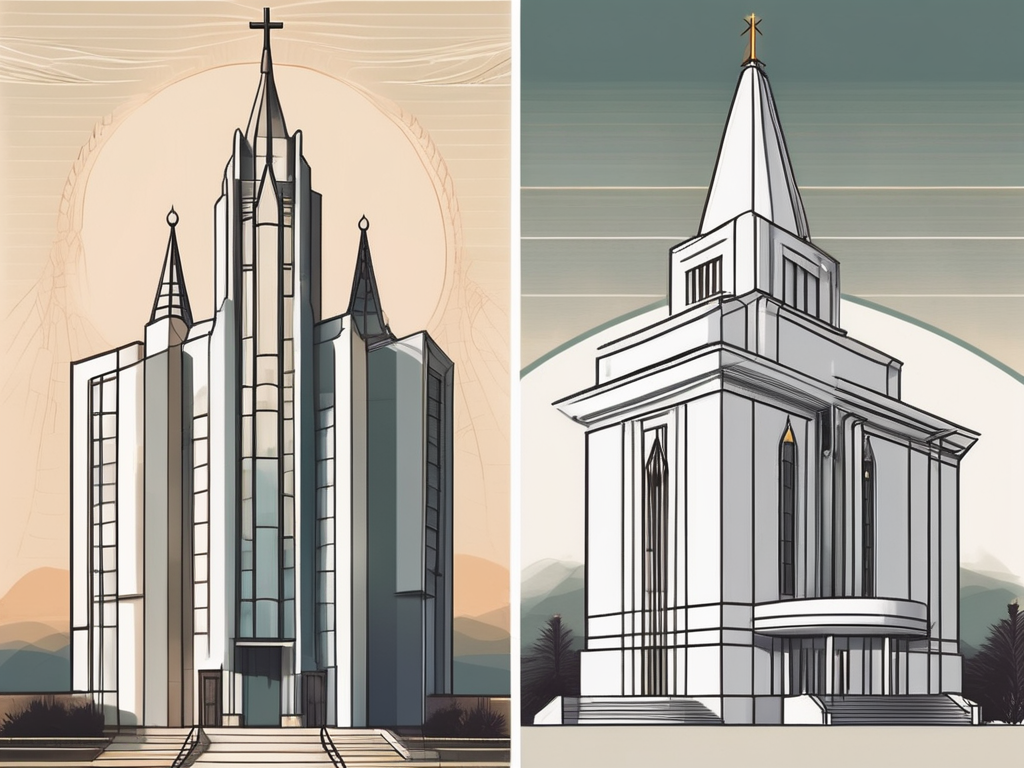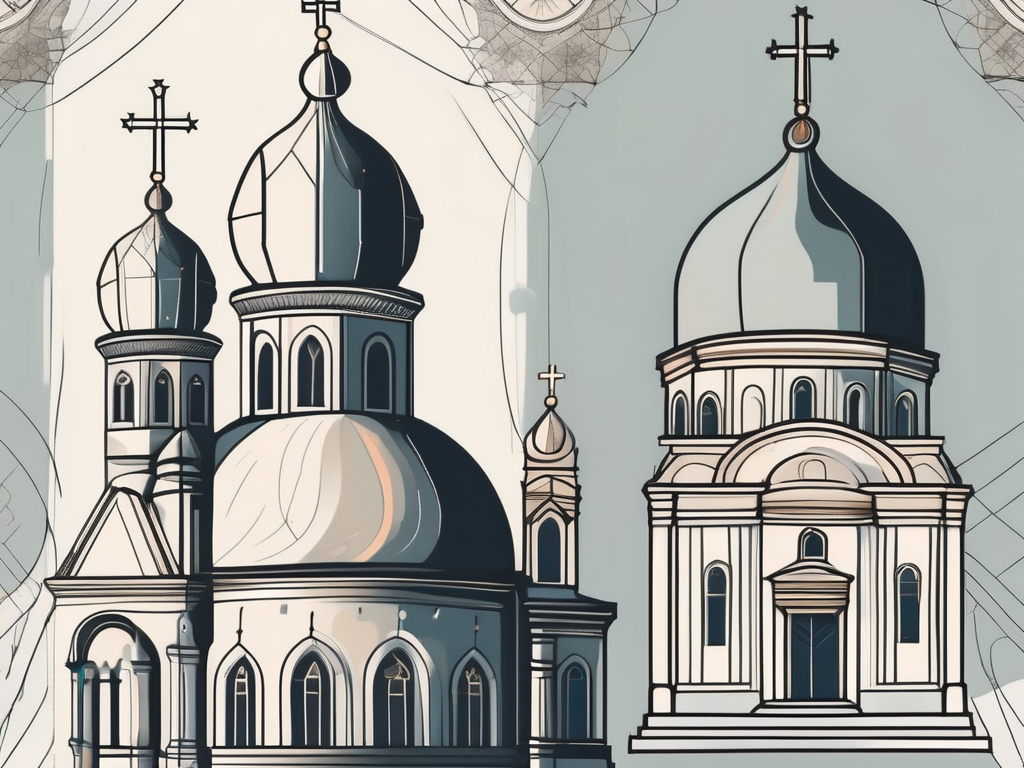Are you curious to learn more about the similarities and differences between two prominent Christian denominations – Seventh Day Adventist and Catholicism? In this article, we will dive into the origins, core beliefs, worship practices, and theological perspectives of these two faiths. By the end, you will have a better understanding of their distinctive features and what unites them as followers of Christ.
Understanding the Basics: Seventh Day Adventist and Catholicism
Let’s start with a brief overview of the origins and history of the Seventh Day Adventist Church and Catholicism. This will provide a foundation for examining their unique characteristics.
The Origins and History of Seventh Day Adventist Church
Rooted in the 19th-century religious revival in the United States, the Seventh Day Adventist Church emerged from the teachings of William Miller. Miller, a Baptist preacher, predicted the second coming of Jesus Christ in 1844, an event known as the Great Disappointment when it did not occur as anticipated. However, this disappointment led to the formation of the Seventh Day Adventist Church, as followers sought to understand the significance of the failed prophecy.
One of the key figures in the development of Seventh Day Adventism was Ellen G. White. Born in 1827, White was a prolific writer and speaker, and her teachings became central to the beliefs of the Seventh Day Adventist Church. She claimed to receive visions and messages from God, which she believed were divinely inspired. These visions, along with her writings, provided guidance and instruction to the early Adventist community.
Over time, the Seventh Day Adventist Church grew in membership and influence. Today, it is a global denomination with millions of adherents around the world. The church places a strong emphasis on health and wellness, promoting vegetarianism and advocating for a balanced lifestyle. Additionally, they observe the Sabbath on Saturday, considering it a day of rest and worship.
The Origins and History of Catholicism
Catholicism traces its roots back to the time of Jesus Christ and the apostles. It developed over centuries, influenced by Roman culture and the early Christian community. The term “Catholic” means universal, reflecting the church’s mission to encompass all people and nations.
During the early years of Christianity, the Catholic Church played a crucial role in the spread and preservation of the faith. It served as a unifying force, providing structure and organization to the growing Christian community. As the Roman Empire embraced Christianity, the Catholic Church became the dominant religious institution in the Western world.
Throughout its history, the Catholic Church has faced numerous challenges and undergone significant transformations. The Great Schism of 1054 resulted in the division between the Roman Catholic Church and the Eastern Orthodox Church. The Protestant Reformation in the 16th century led to further divisions within Christianity, with the emergence of various Protestant denominations.
Despite these divisions, the Catholic Church remains the largest Christian denomination in the world. It is led by the Pope, who is considered the successor of Saint Peter, the first bishop of Rome. The Catholic Church places a strong emphasis on tradition, sacraments, and the authority of the Pope and the Magisterium, the teaching authority of the Church.
Throughout history, Catholicism has played a pivotal role in shaping Western civilization. It has been a patron of the arts, fostering the development of magnificent cathedrals, sculptures, paintings, and music. The Catholic Church has also been involved in various social and humanitarian initiatives, advocating for justice, peace, and the dignity of every human being.
Core Beliefs and Practices
Now let’s delve into the fundamental beliefs and practices that form the spiritual backbone of Seventh Day Adventist and Catholic faiths.
Fundamental Beliefs of Seventh Day Adventists
Seventh Day Adventists place a strong emphasis on the Bible as the ultimate authority in matters of faith and practice. They believe in the imminent return of Jesus Christ, the observance of the seventh-day Sabbath, the doctrine of the state of the dead, and the concept of the investigative judgment.
The belief in the imminent return of Jesus Christ is a central tenet of Seventh Day Adventism. Adventists eagerly anticipate the second coming of Christ, believing that it will bring about the end of the world as we know it and the establishment of God’s eternal kingdom. This belief fuels their sense of urgency in spreading the gospel and living a life of righteousness.
In addition to their belief in the second coming, Seventh Day Adventists also place great importance on observing the seventh-day Sabbath. They believe that God set apart the seventh day of the week, Saturday, as a day of rest and worship. Adventists view Sabbath observance as a way to honor God’s creation and to deepen their relationship with Him.
The doctrine of the state of the dead is another distinctive belief of Seventh Day Adventists. They reject the idea of an immortal soul and instead teach that death is a state of unconscious sleep until the resurrection. This belief brings comfort to Adventists, as they trust in God’s promise of eternal life through Jesus Christ.
Lastly, the concept of the investigative judgment is a unique teaching of Seventh Day Adventism. Adventists believe that before Christ’s second coming, there will be a judgment in heaven where God will examine the lives of all individuals who have professed faith in Him. This judgment is seen as an opportunity for God to vindicate His people and to demonstrate His justice and mercy.
Key Tenets of Catholicism
Catholicism, too, holds Scripture as a vital component of belief, alongside sacred tradition and the teaching authority of the Church. Key Catholic doctrines include the Holy Trinity, the teachings of the magisterium, the sacraments, and the veneration of Mary and the saints.
The belief in the Holy Trinity is at the core of Catholic theology. Catholics affirm that God is one being in three persons: Father, Son, and Holy Spirit. This mystery of the Trinity is central to understanding the nature of God and His relationship with humanity.
In addition to Scripture, Catholics also hold sacred tradition as an important source of divine revelation. Sacred tradition encompasses the teachings, practices, and customs that have been passed down through the centuries within the Church. It complements and illuminates the truths found in Scripture, providing a rich tapestry of faith and worship.
The magisterium, or the teaching authority of the Church, plays a crucial role in Catholicism. It consists of the Pope and the bishops in communion with him, who are entrusted with the task of interpreting and safeguarding the deposit of faith. Catholics believe that the magisterium is guided by the Holy Spirit, ensuring the Church’s fidelity to the teachings of Christ.
The sacraments are sacred rituals that Catholics believe confer God’s grace upon the faithful. These include baptism, confirmation, Eucharist, reconciliation, anointing of the sick, holy orders, and matrimony. Each sacrament is seen as a visible sign of God’s invisible presence and a means of encountering His saving power.
Lastly, Catholicism places a special emphasis on the veneration of Mary and the saints. Catholics believe that Mary, as the mother of Jesus, holds a unique and honored place in salvation history. They also honor the saints, who are seen as holy men and women who have lived exemplary lives of faith and are now in the presence of God. Catholics seek their intercession and strive to imitate their virtues.
Worship and Rituals
Worship practices offer a window into the spiritual life of a community. Let’s explore how Seventh Day Adventists and Catholics approach worship and rituals.
Worship Practices in Seventh Day Adventist Church
Seventh Day Adventists prioritize congregational worship on Saturdays, the seventh day of the week, observing it as the Sabbath. Their services typically include Bible study, prayer, hymn singing, and sermons. Additionally, health and wellness play a significant role in Adventist worship, with an emphasis on a vegetarian diet and exercise.
Seventh Day Adventists believe that the Sabbath is a time of rest and reflection, where they can deepen their relationship with God and rejuvenate their spirits. The Sabbath begins at sunset on Friday and ends at sunset on Saturday. During this time, Adventists refrain from work and engage in activities that promote spiritual growth and community bonding.
In addition to the regular worship services, Seventh Day Adventists also have special ceremonies and rituals that hold great significance for their community. One such ritual is the foot washing ceremony, which symbolizes humility and service. This practice is derived from the biblical account of Jesus washing the feet of his disciples as a demonstration of love and humility.
Another important aspect of Adventist worship is the emphasis on health and wellness. Adventists believe that the body is the temple of the Holy Spirit and should be cared for accordingly. As a result, many Adventists follow a vegetarian diet and engage in regular exercise. They view these practices as a way to honor God and maintain a healthy lifestyle.
Worship Practices in Catholic Church
The Catholic Church cherishes the Eucharist as the center of its liturgical life. Mass, celebrated daily, is a cornerstone of Catholic worship. It involves various rituals, including readings from Scripture, prayers, sacraments, and spiritual communion with Jesus through the consumption of bread and wine.
Mass is a sacred and solemn ceremony in the Catholic Church. It is conducted by a priest, who leads the congregation in prayers, hymns, and readings from the Bible. The readings are carefully selected to reflect the liturgical calendar and the teachings of the Church.
One of the most significant moments during Mass is the consecration of bread and wine, where they are believed to be transformed into the body and blood of Jesus Christ. This transformation, known as transubstantiation, is a central belief in Catholic theology and is seen as a way for the faithful to partake in the real presence of Christ.
Another important aspect of Catholic worship is the use of sacraments. Sacraments are sacred rituals that Catholics believe confer grace and strengthen their relationship with God. The seven sacraments include baptism, confirmation, Eucharist, reconciliation, anointing of the sick, holy orders, and matrimony. Each sacrament has its own unique rituals and significance within the Catholic faith.
In addition to the regular Mass, Catholics also have various devotional practices and rituals that enrich their spiritual lives. These include praying the rosary, attending adoration of the Blessed Sacrament, participating in processions, and observing holy days and feast days that commemorate important events and saints in the Catholic tradition.
The Role of Scripture and Tradition
Both Seventh Day Adventists and Catholics draw guidance from Scripture and tradition. Let’s explore how these two sources shape their religious practices.
The Importance of Bible in Seventh Day Adventist Church
Seventh Day Adventists believe that the Bible contains God’s inspired and authoritative word. They prioritize individual study and group discussions of Scripture, seeking to apply its principles to daily life. They hold a deep reverence for the Ten Commandments and view the Old and New Testaments as essential components of their faith.
The Role of Scripture and Tradition in Catholicism
Catholicism recognizes the Bible as sacred and holds it alongside sacred tradition and the interpretations of the Church. Scripture and tradition intertwine to provide a comprehensive understanding of faith. Catholic worship draws heavily from biblical narratives, liturgy, and writings of early Christian theologians.
Theological Differences and Similarities
As with any denominational comparison, theological disparities emerge. Let’s explore a couple of key areas where Seventh Day Adventists and Catholics may differ.
Views on Salvation and Afterlife
Seventh Day Adventists believe in salvation by grace through faith, emphasizing the need for personal repentance and acceptance of Jesus Christ. They also hold a distinctive belief in the doctrine of the “investigative judgment,” which maintains that a pre-advent judgment is taking place in heaven, assessing the lives of believers.
Catholics embrace salvation through God’s grace, received through faith and the sacraments. They place emphasis on the role of good works as an expression of faith. Catholic theology encompasses the concepts of purgatory, intercession of saints, and a life beyond death.
Perspectives on the Nature of God and Jesus Christ
Seventh Day Adventists affirm the deity of Jesus Christ and believe in His physical return to Earth. They hold the belief in the Trinity – God as one being in three persons.
Catholics also embrace the Trinity and believe in the divinity of Jesus Christ. They venerate and pray to Jesus, Mary, and the saints, viewing them as intercessors between God and humanity.
In conclusion, while Seventh Day Adventist and Catholicism have distinct origins, beliefs, worship practices, and theological differences, both share a common foundation in the life, teachings, and resurrection of Jesus Christ. Recognizing and appreciating these diversities can foster dialogue and mutual understanding among Christians, promoting unity within the greater body of Christ.
